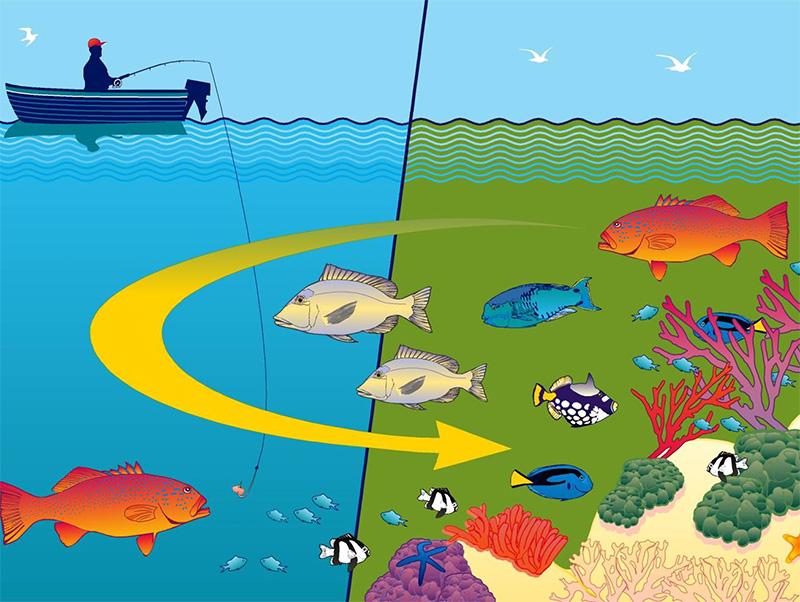Wyoming Youth Embark on Fish Conservation Journey
In an inspiring effort that merges education with environmental responsibility, students throughout Wyoming are engaging in hands-on fish conservation activities. By exploring the complex lifecycle of fish—from the initial egg stage to the development of fingerlings—they are gaining essential knowledge about aquatic ecosystems. This initiative allows students to actively participate in various tasks, including:
- Egg Harvesting: Learning effective techniques for collecting fish eggs while minimizing disruption.
- Incubation Methods: Experimenting with different hatching processes to achieve optimal hatch rates.
- Sustainable Brood Management: Recognizing the significance of maintaining a healthy adult fish population.
The impact of these initiatives extends beyond academic learning; they instill a profound sense of stewardship towards local ecosystems. Students engage in monitoring water quality, studying diverse fish species, and participating in habitat restoration projects within their communities. The following table illustrates their contributions and ecological outcomes:
| Project Element |
Student Participation |
Ecosystem Benefits |
| Aquatic Egg Hatchery |
Active monitoring by students |
Boosted fish populations |
| Aquatic Health Assessment |
Regular sampling conducted by students | Biodiversity enhancement through improved habitats
|
Educational Programs Enhance Aquatic Ecosystem Awareness
This innovative project is transforming schools across Wyoming into hubs for experiential learning focused on aquatic conservation. Through interactive programs, students can engage in activities such as:
- Cultivating Fish Eggs: Students monitor and nurture eggs within classroom aquariums.
- Aquatic Quality Analysis: Young learners assess conditions necessary for sustaining healthy fish populations.
- Navigating Species Identification:
This initiative not only fosters an appreciation for ecological balance but also equips participants with crucial skills needed for future environmental advocacy. As they advance through this program, they contribute significantly to research aimed at safeguarding local fisheries. A recent workshop convened educators, students, and conservation specialists to address challenges facing aquatic environments while underscoring sustainable practices’ importance—demonstrating how education can empower youth as active participants in conservation efforts.
| Event Type |
Details |
|
| Fish Release Activities | < td >Students assist with releasing fingerlings into nearby waterways . td > tr >< tr >< td >Field Excursions td >< td >Explorations of rivers and lakes provide real-world ecosystem insights . td > tr >< tr >< td >Expert Talks td >< td >Local biologists share knowledge on best practices for conservation . /t d > tr > tbody > table >
The preservation of local fisheries has evolved into a community-centric endeavor across Wyoming as young people immerse themselves in practical experiences that emphasize the significance of aquatic ecosystems. By participating in hatchery programs , these learners not only gain insight into the life cycle from egg to fingerling but also cultivate a sense of duty toward their natural surroundings . Collaborative efforts among educational institutions , environmental groups , and governmental bodies are nurturing a new generation committed to understanding that thriving fish populations depend on collective action . These initiatives highlight public involvement’s role in monitoring aquatic health , ensuring future generations can appreciate Wyoming’s stunning waterways .< / p >
Beyond educational advantages , community collaboration provides vital resources necessary for effective conservation strategies . Local experts often partner with students to conduct research while implementing sustainable methods . This partnership enriches learning experiences by allowing participants firsthand exposure to real-world applications related to their studies.< / p >
- < strong>Tangible Learning Experiences : strong Practical engagement enhances understanding regarding fisheries management.< / li >
- < strong>Date Gathering : strong Students survey local populations contributing valuable data.< / li >
- < strong>Aware Campaigns : strong Initiatives designed educate public about importance conserving our waters.< / li >
- < strong>Ecosystem Restoration Projects : strong Joint efforts aimed rehabilitating damaged habitats enhance biodiversity.< / li >
< th style="">Activity< th style="">Description< th style="">Impact< th />< tr style="">< t d ">Hatchery Tours< t d ">Students observe breeding processes learn care techniques< t d ">Greater comprehension biology fishes
| Water Quality AssessmentsHands-on experience measuring health parameters“Increased awareness regarding environment’s condition
| < t d ">“Community Clean-Up EventsVolunteers clear debris from waterwaysd”Improved habitats supporting native fishes
|
Conclusion: A Bright Future Ahead
As twilight descends over Wyoming’s breathtaking landscapes, an emerging generation dedicated towards environmental stewardship takes shape thanks largely due commitment shown by its youth involved within these initiatives! From nurturing delicate embryos until releasing them back home again –these aspiring conservators aren’t just absorbing information; they’re actively shaping tomorrow’s biodiversity landscape! Through immersive experiences coupled alongside structured educational frameworks—students forge deeper connections nature whilst embracing responsibilities tied protecting it too! Their ongoing participation signifies how critical such programs remain when fostering sustainable futures ahead where natural resources thrive under careful watchful eyes like theirs!
